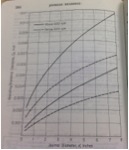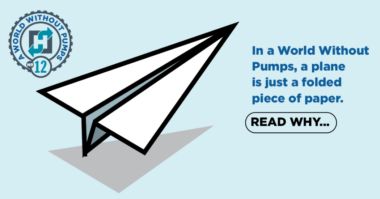In our training classes, we emphasize the importance of always rotating the shafts in same direction each time. Here’s why it is so important:
- If machines have sleeve or pad bearings, there are clearances between the journal and the bearing. On larger machines, this can be several mils of clearance (see
 chart on journal clearances from Machinery’s Handbook). When the shafts are rotated, they have a tendency to “climb” up one side of the bearings. If they are rotated in the other direction, they tend to “climb” up the other side of the bearings. The difference in shaft centerline positions between these two measurements could cause errors, especially if the shafts and bearing ID’s are large.
chart on journal clearances from Machinery’s Handbook). When the shafts are rotated, they have a tendency to “climb” up one side of the bearings. If they are rotated in the other direction, they tend to “climb” up the other side of the bearings. The difference in shaft centerline positions between these two measurements could cause errors, especially if the shafts and bearing ID’s are large. - Other machine components, such as gears, cams, seals, and couplings can cause slight variations in the shaft centerlines during rotation. One of the most common causes of this is coupling “backlash”-usually caused by the design clearances of the coupling, or by worn coupling components. Rotating in the same direction each time can help control “backlash” improving the accuracy of alignment measurements.
- Some machines and machine components are not designed to be rotated in the opposite direction of their design, such as combustion engines, cooling tower gearboxes, and some mechanical seals, as examples. In these cases, proper direction of rotation is critical.
Since you may not know some of these variables, it is always good practice to rotate the shafts being aligned in the same direction.
Shaft alignment calculations, regardless of the measuring tool, are mathematical calculations. The more accurate and repeatable the inputs are, the more accurate and repeatable the outputs will be.
For more information, visit VibrAlign.com




I can hear millwrights and maintenance techs all over the world responding to this excellent tutorial by saying, ” Son of a @#$%^….I wish I knew that years ago!”
Very good article. Something I learned to do many years ago while I was commissioning projects in Saudi Arabia on Aramco projects